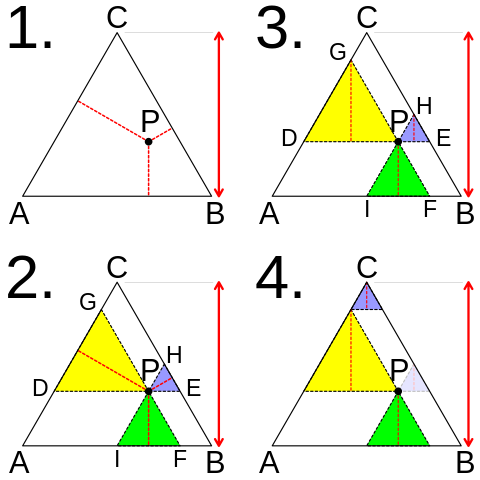
Pick any point in the interior of an equilateral triangle and draw a perpendicular to each of the three sides. The sum of these perpendiculars is the height of the triangle.
That’s Viviani’s theorem. This visual proof is by CMG Lee:
- Choose point P and draw the three perpendiculars.
- Now draw three lines through P, each parallel to a side of the main triangle. This creates three small similar triangles.
- Because these smaller triangles are equilateral, we can rotate each so that its altitude is vertical.
- Because PGCH is a parallelogram, we can slide triangle PHE to the top, and now the heights of the three constituent triangles sum to that of triangle ABC.
The converse of the theorem is also true: If the sum of the perpendiculars from a point inside a triangle to its sides is independent of the point’s location, then the triangle is equilateral.
